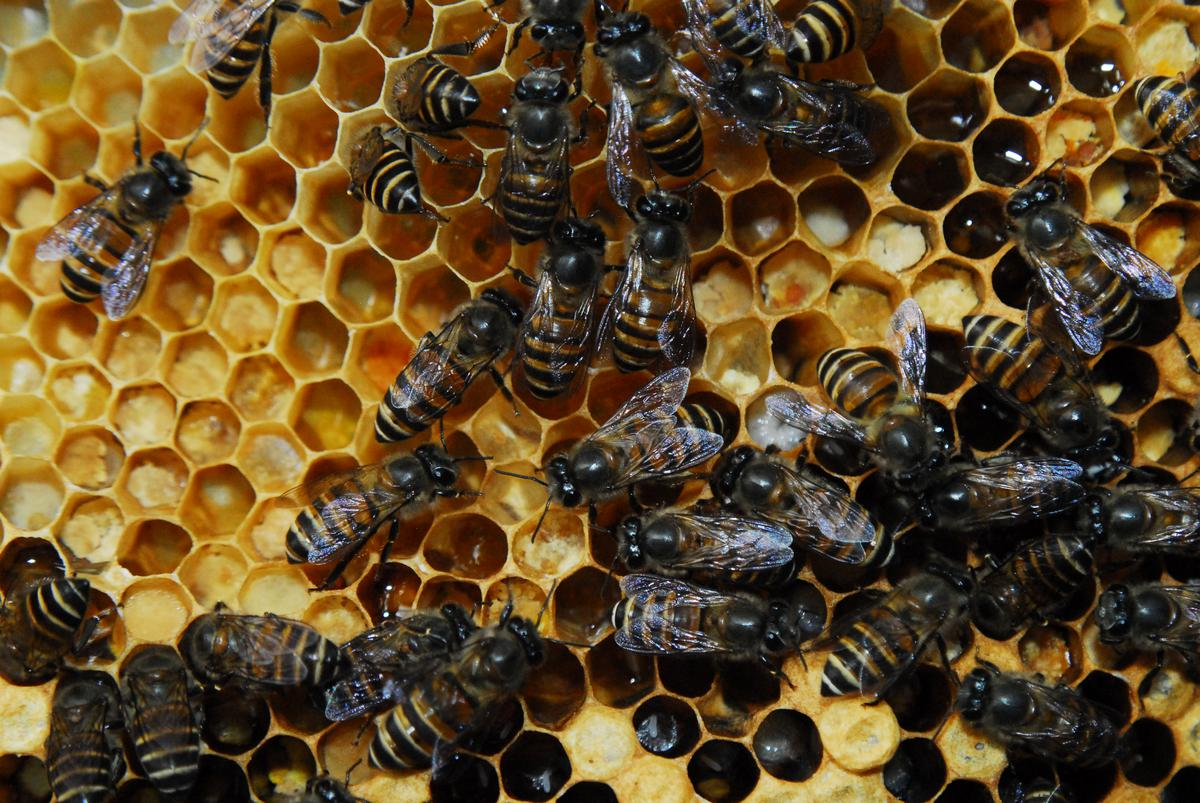Important Facts For Prelims
Newly Discovered Species of Honeybee
- 07 Nov 2022
- 5 min read
Why in News?
Recently, a new species of endemic honeybee named Apis karinjodian has been discovered in the Western Ghats after a gap of more than 200 years.
- The last honeybee described from India was Apis indica in 1798 by Fabricius.
- The new find has increased the species of honeybees in the world to 11.
What are the Key Specifications about the Species?
- About:
- Common Name: Indian black honeybee.
- Apis karinjodian has evolved from Apis cerana morphotypes that got acclimatised to the hot and humid environment of the Western Ghats.
- Indian black honeybees are able to produce a thicker honey which allows for increased honey production.
- Till date, only a single species, Apis cerana was noted across the plains of central and southern India and Sri Lanka as a ‘fairly uniform population’ in the Indian subcontinent.
- The research has given a new direction to apiculture in the country by showing the presence of three species of cavity nesting honey bees, namely Apis indica, Apis cerana, and Apis karinjodian.
- Distribution:
- The distribution of Apis karinjodian ranges from the central Western Ghats and Nilgiris to the southern Western Ghats, covering the States of Goa, Karnataka, Kerala and parts of Tamil Nadu.
- Protection:
- IUCN Red List: Near Threatened (NT)
What is the Status of the Apiculture in India?
- The globally apiculture market is estimated to register a Compounded Annual Growth Rate (CAGR) of 4.3% during the period 2020–25, with Asia–Pacific as the dominant producer.
- The Indian apiculture market size is expected to reach a value of Rs 33,128 million by 2024, expanding at a CAGR of nearly 12% by 2024.
- India is the sixth major natural honey exporting country.
- During 2019–20, the recorded export of natural honey was 59,536.75 MT for Rs 633.82 crore. The major export destinations were the USA, Saudi Arab, Canada, and Qatar.
What are Related Initiatives?
- ‘Sweet Revolution’:
- It is an ambitious initiative of the Government of India for promoting apiculture, popularly known as 'beekeeping'.
- To provide a booster shot to Sweet Revolution, the government launched the National Beekeeping and Honey Mission in 2020 (under the Ministry of Agriculture and Farmers Welfare).
- National Beekeeping and Honey Mission aims to establish 5 big regional and 100 small honey and other Bee Products testing laboratories.
- Out of the total target, 3 world class state-of-the-art laboratories have been setup, whereas 25 small laboratories are in the process of being set up.
- Assistance for Setting up of Processing Units:
- India is also providing assistance to the beekeepers for setting up of Processing Units.
- More than 1.25 lakh metric tonnes of honey are being produced in the country, out of which more than 60 thousand metric tonnes of natural honey is exported.
- Adopting Scientific Techniques:
- In order to bring qualitative upgradation of domestic honey to attract the world market, the Government of India and the State Governments are making concerted efforts and focusing on capacity building of beekeepers for production of honey by adopting scientific techniques.
UPSC Civil Services Examination, Previous Year Questions (PYQ)
Q. Consider the following kinds of organisms: (2012)
- Bat
- Bee
- Bird
Which of the above is/are pollinating agent/agents?
(a) 1 and 2 only
(b) 2 only
(c) 1 and 3 only
(d) 1, 2 and 3
Ans: (d)
Exp:
- Pollination is the transfer of pollen from the male part of a plant to the female part of a plant, thus, enabling fertilisation and production of seeds, most often by an animal or by wind.
- Pollinating agents are animals such as insects, birds, bees and bats, water, wind, and even plants themselves, when self-pollination occurs within a closed flower. Hence, 1, 2 and 3 are correct.
- Pollination often occurs within a species. When pollination occurs between species, it can produce hybrid offsprings in nature and in plant breeding.





